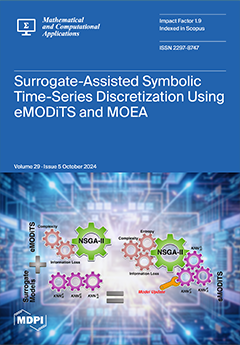This study implements a minded approach to studying Ebola virus disease (EVD) by dividing the infected population into aware and unaware groups and including a hospitalized compartment. This offers a more detailed understanding of illness distribution, potential analyses, and the influence of public
[...] Read more.
This study implements a minded approach to studying Ebola virus disease (EVD) by dividing the infected population into aware and unaware groups and including a hospitalized compartment. This offers a more detailed understanding of illness distribution, potential analyses, and the influence of public knowledge. The findings might improve healthcare budget apportionment, public health policy, and contest Ebola and related infections. In this study, we fully observe the new model
that we have constructed. We start by outlining the essential concepts of the model and confirming its mathematical reliability. Next, we calculate the fundamental reproductive number
, which is critical for appreciating how the infection spreads and how effective treatments might be. We also study stability analysis, which looks at when the disease may decline or become chronic. Furthermore, we exhibit the occurrence of bifurcation in the EVD Epidemic Model and perform a sensitivity analysis of
. The main findings of this study show that for
, the disease-free equilibrium, is globally stable, meaning the disease will die out, whereas for
, the endemic equilibrium is stable, meaning the disease persists. Additionally, the sensitivity analysis reveals that the most influential parameters in controlling
are the transmission rate and the recovery rate, which could guide effective intervention strategies. Finally, we use numerical simulations so that out outcomes are more significant.
Full article





